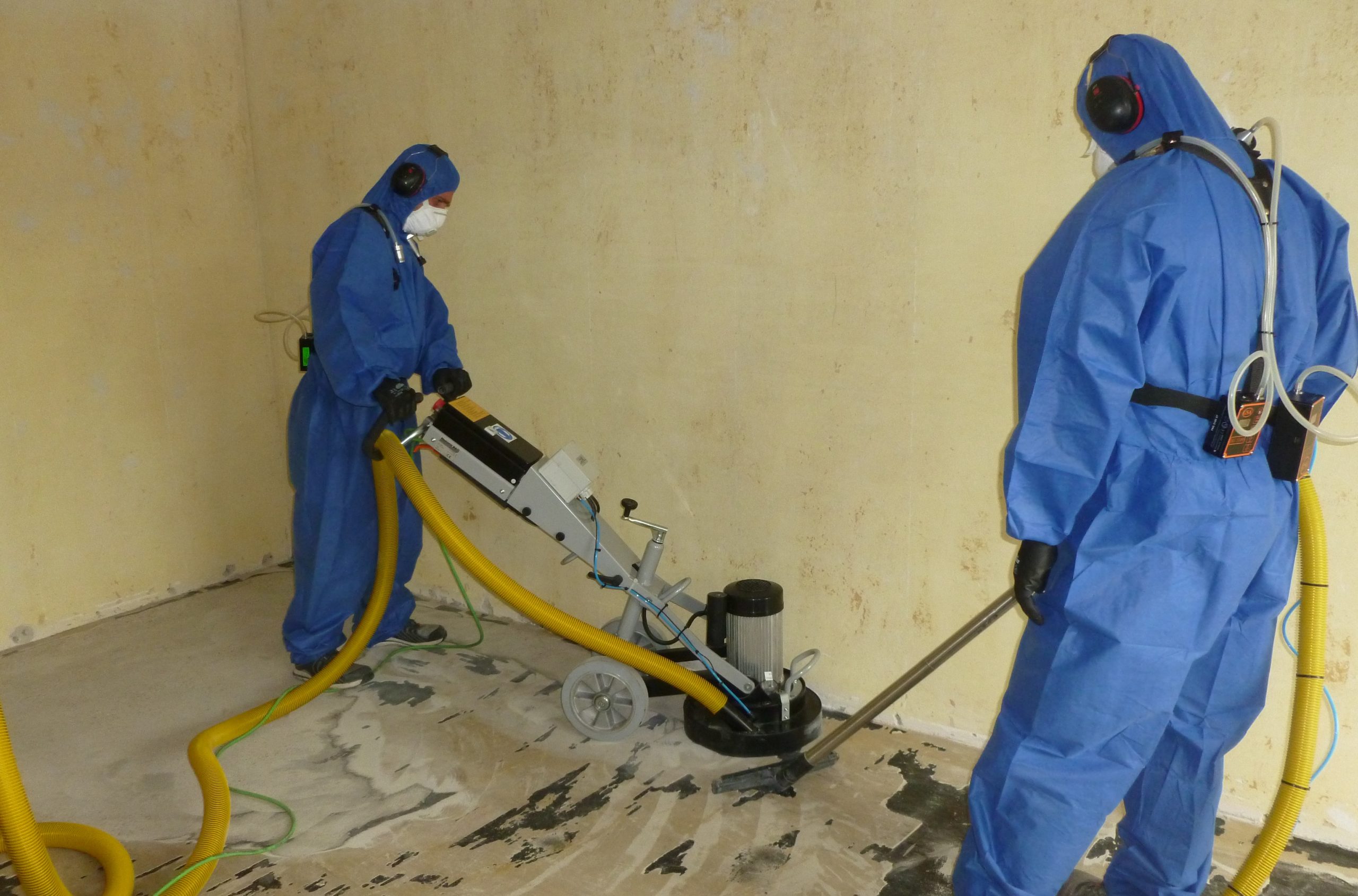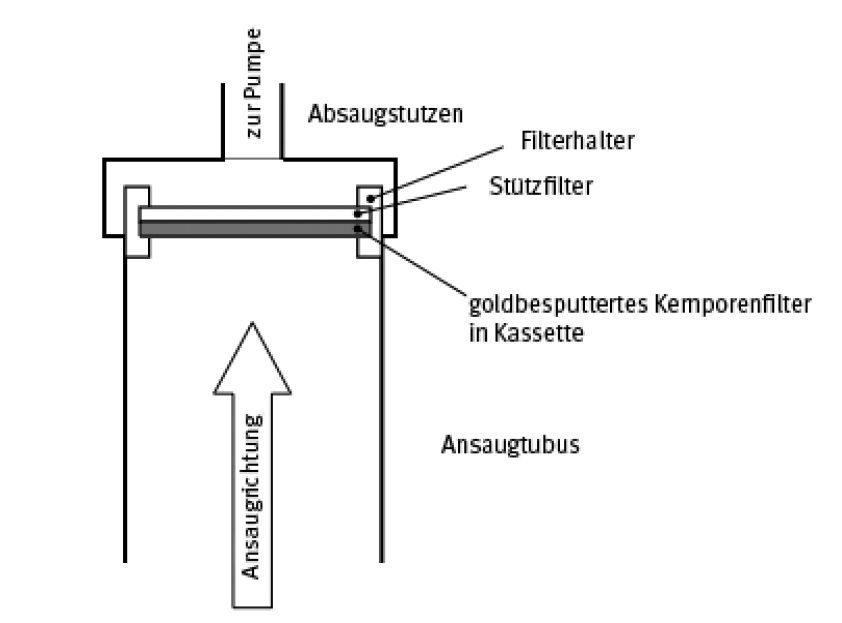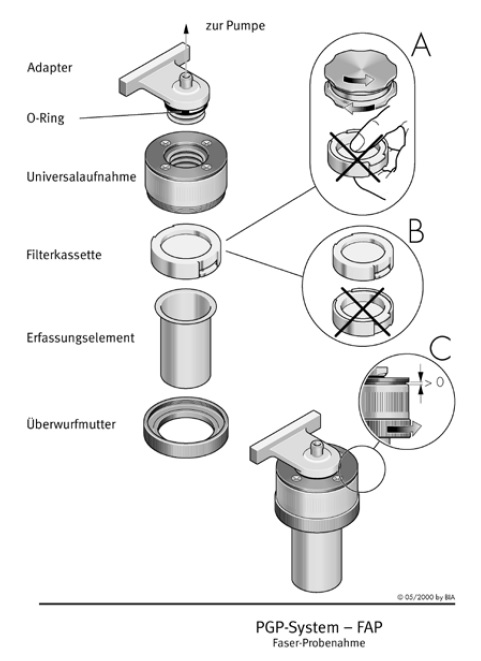This method has been tried and tested and is recognised by the employers’ liability insurance associations as a discontinuous method at workplaces for determining respirable asbestos fibres and other inorganic fibres of a minimum length of 5 µm.
Depending on the task, sampling can be person-related (the sample holder is placed in the breathing zone of the worker) or stationary (a measuring device is placed in the area to be assessed). The sampling time must be chosen in such a way that the measurement results are representative for the assessment of the situation according to the measurement task.
Gold-coated core pore filters with a pore size of 0.8 µm are used for sampling. There are two suitable systems for sampling according to DGUV Information 213-546:
- Monitor (25 mm Ø)
With this system, a volume flow of 1 l/min must be set on the sampling device (GSA 5100 or GSA 3500). - PGP cassette (37 mm Ø)
With this system a volume flow of 2 l/min must be set on the sampling device (GSA 5100 or GSA 3500).
The sampled filters are glued onto an aluminium sample carrier in the laboratory and treated with oxygen plasma, whereby organic material on the filter is removed and the visibility of fine fibres is greatly improved.
The evaluation is carried out in a scanning electron microscope with an EDX (energy dispersive X-ray analysis) detector. The filters are searched according to the guideline and the fibres found are counted and assigned to certain classes (asbestos, other inorganic fibres, gypsum). Specially developed counting software and experienced personnel guarantee a fast and reliable count.
The detection limit of the measurements performed depends directly on the sampling time. For asbestos in demolition, refurbishment and maintenance work without protective measures, an occupational exposure limit value of 10.000 F/m³ applies. If this limit is not reached by the detection limit of the normal filter evaluation, the detection limit is improved by the filter evaluation with increased counting effort.
(Source: DGUV Information 213-546)


